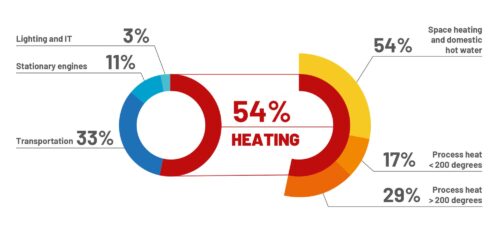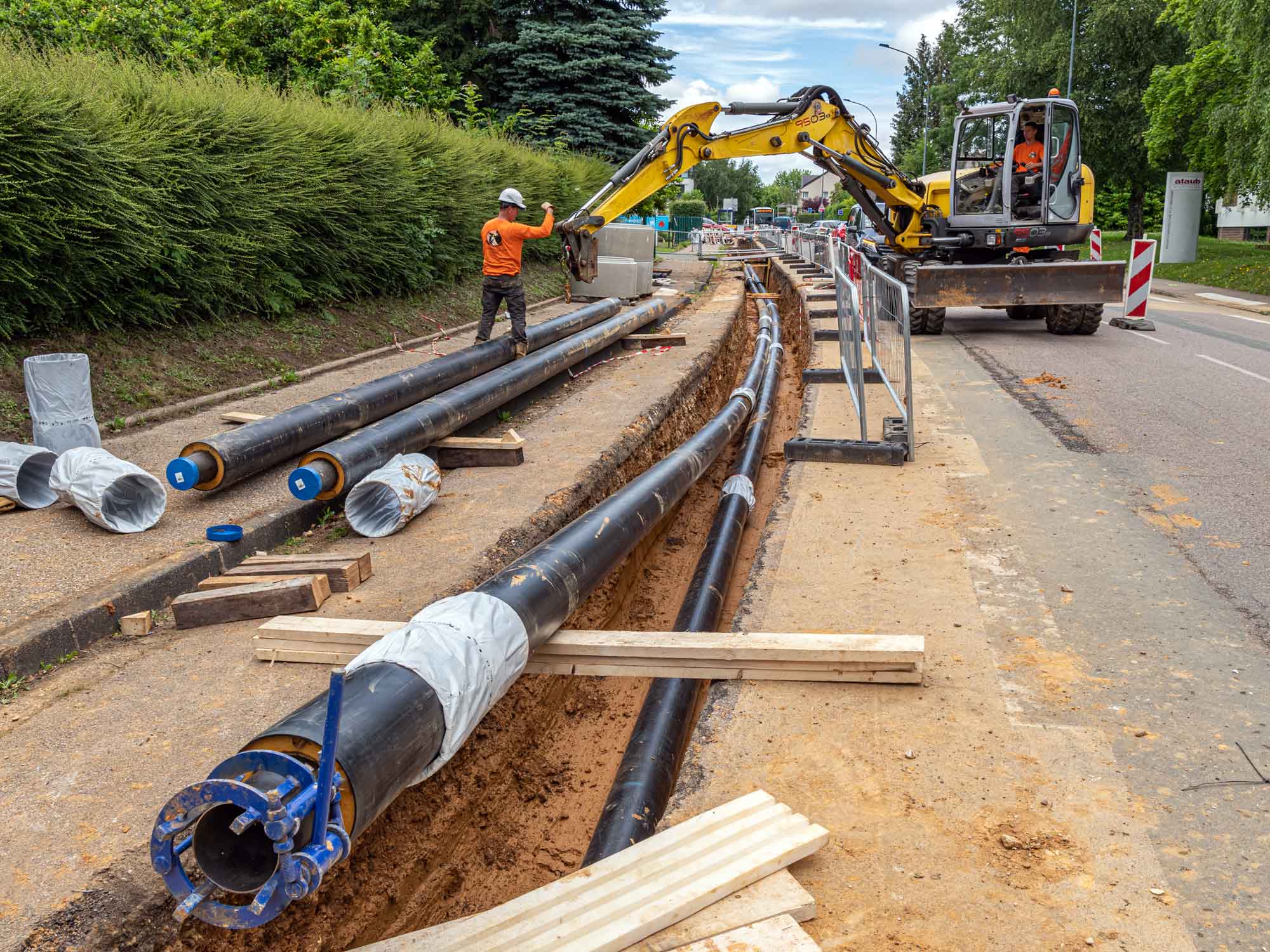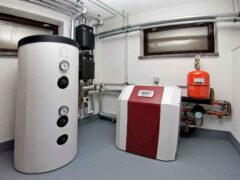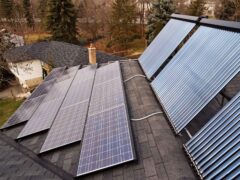The impacts of the climate crises and the current geopolitical and energy policy challenges clearly show that the decarbonisation of all sectors of the economy must be accomplished as rapidly as possible. Achieving climate neutrality and a sustainable energy supply requires reduced energy consumption across all economic sectors, significant improvements in energy efficiency and a transition to an energy system based on renewable energy sources. The heating sector is of tremendous importance for the energy transition. The generation of heat accounts for roughly 54% of final energy consumption in Austria. This is largely split between households and industrial production at 40% each, with the service and agricultural sector accounting for the remaining consumption.
The share of space heating and domestic hot water generation in the heating market also makes up around 54%. While low temperatures are required in these applications, many forms of industrial production feature a high demand for process heat at several hundred degrees Celsius. Collectively across all sectors, one third of heat is generated with natural gas, followed by 29 % with renewable energy sources. At 14%, electricity accounts for only a small portion of the heating sector. However, the share of natural gas in heating supply varies significantly between the individual sectors (industry 49 % and households 24 % in 2019).1
Decarbonisation of industrial production is a major challenge. This calls for entirely new processes, some of which are only just being developed. New technologies are available for climate-neutral heating of buildings based on renewable energy sources. These must be implemented as rapidly as possible in combination with measures to reduce energy consumption and increase energy efficiency.
The total energy use of Austrian households in 2019/2020 amounted to 284,871 TJ, of which space heating accounts for 200,314 TJ and electricity consumption for 69,211 TJ.2 Just 34 % of the energy used for space heating and domestic hot water generation comes from renewable sources.3

Climate-friendly buildings
With new builds or the renovation of existing buildings, it is necessary to further reduce energy consumption for heating and cooling with suitable measures while at the same time switching to climate-friendly energy supply based on the use of new, clean technologies for heating, hot water and cooling. With rising temperatures energy-efficient air conditioning of buildings will have an increasingly important role to play.
Coupled with a corresponding reduction in energy consumption, switching to renewable energy sources for heating buildings with biomass technologies, direct use of solar energy, geothermal energy and ambient heat offers a path to a sustainable, climate-neutral heating sector.
One key aspect – especially in urban areas – is the expansion of district heating. Here the goal is to rapidly increase the share of renewable energy carriers, which is currently at around 50% for local and district heating in Austria, and to integrate new heat sources such as waste heat, heat pumps, geothermal energy, solar heat and biomass.4

Energy consumption of households and energy sources 2019/2020 (black coal, brown coal, brown coal briquettes and coke below the depiction threshold),
graphic: Waldhör KG, data source: Statistics Austria
The heating transition must be understood as part of the transformation of the entire energy system. It is not about merely replacing individual technologies – the entire structure of energy supply must be transformed, by means of digitalisation, decentralisation and democratisation. The fluctuating availability of energy from renewable sources and the large number of small, distributed energy producers require a more flexible energy system. The changes, however, will not be limited to infrastructure and technology, but will also affect the way buildings are used. Furthermore, users will also play a vital role in the future by actively participating in the energy system with new, digital applications.
In this edition, we present national research and development projects that are bringing us closer to achieving a sustainable heating supply. We also report on Austria’s participation in the activities of the International Energy Agency (IEA) on this topic.
1 Figures for the Austrian heating market, Austrian Energy Agency, 2021
positionen.wienenergie.at/wp-content/uploads/2022/03/20210118_AEA_Erneuerbare_Waerme_Lechner.pdf
2 Statistics Austria, energy consumption of households by energy carriers and by purpose and useful energy analysis
statistik.at/en/statistics/energy-and-environment/energy/energy-consumption-of-households
statistik.at/en/statistics/energy-and-environment/energy/useful-energy-analysis
3 Energy in Austria, figures, data, facts, BMK, 2021
nachhaltigwirtschaften.at/resources/nw_pdf/Energie_in_OE2021_UA.pdf
4 bmk.gv.at/themen/energie/energieversorgung/fernwaerme.html



